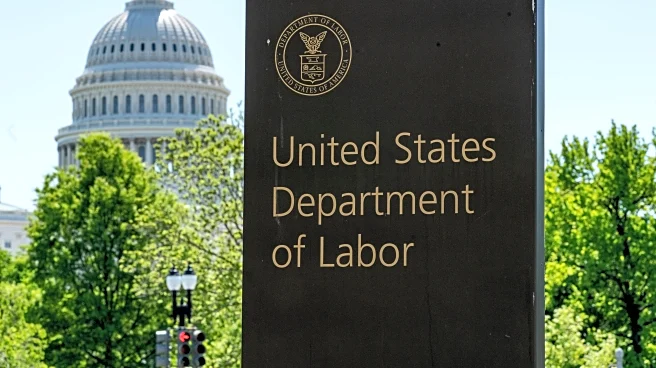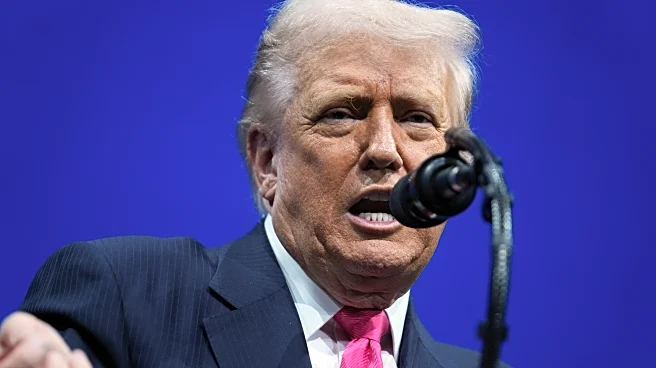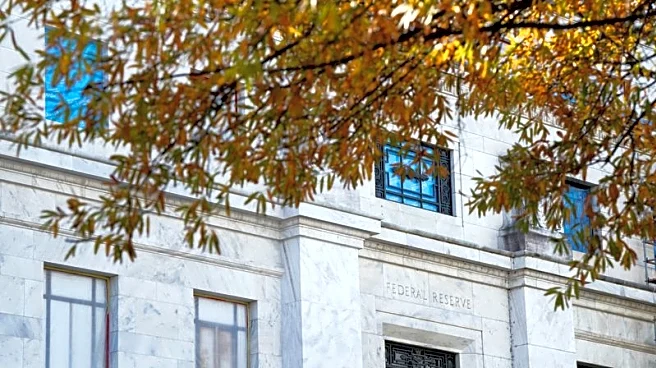What's Happening?
The Federal Reserve is grappling with inflation rates that remain above its 2% target, partly due to tariffs imposed by President Trump. The September jobs report, delayed by nearly seven weeks due to a government
shutdown, reveals that U.S. employers added 119,000 jobs, with the unemployment rate rising to 4.4%. The report indicates mixed job market conditions, with hiring strong in healthcare and hospitality but declining in factories and warehouses. Federal Reserve Governor Chris Waller has expressed concerns about the job market stalling, suggesting potential layoffs. The Fed is considering whether to hold interest rates steady or cut them to boost demand, amid disagreements among policymakers.
Why It's Important?
The delayed jobs report and persistent inflation pose significant challenges for the Federal Reserve's monetary policy decisions. High inflation rates, exacerbated by tariffs, could lead to increased costs for goods, affecting consumer spending and economic growth. The potential for layoffs and a stalling job market could further strain the economy, impacting employment and income levels. The Fed's decision on interest rates will be crucial in addressing these economic pressures, influencing borrowing costs, investment, and overall economic stability. Stakeholders, including businesses and consumers, may face uncertainty as they navigate these economic conditions.
What's Next?
The Federal Reserve is expected to meet next month to discuss interest rate policies, with potential implications for inflation and the job market. The absence of October and November jobs data due to the shutdown complicates decision-making, leaving policymakers reliant on anecdotal reports from businesses. The Fed's actions will be closely watched by economic stakeholders, as they could impact inflation, employment, and consumer spending. Businesses may need to adjust strategies in response to potential interest rate changes, while consumers could face varying borrowing costs and spending power.














